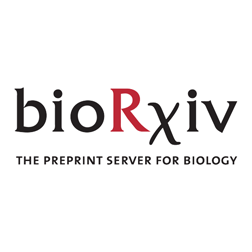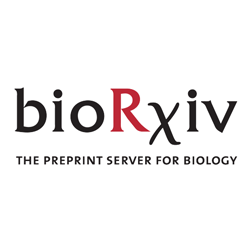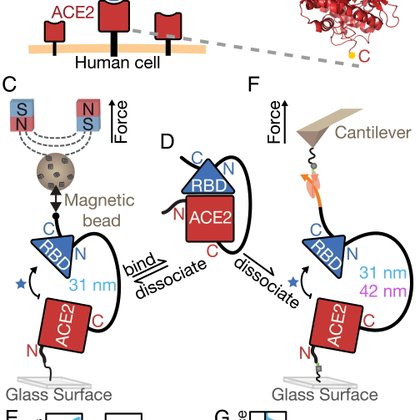
Brian Zhong
@bri_zhong
Followers
121
Following
112
Media
0
Statuses
34
ChemE PhD @Stanford in the @Dunn_Lab interested in cell adhesion and brains @NSF and @Stanford_ChEMH fellow, former @MITChemE Crossword puzzle enthusiast
Joined April 2021
It was great working with you the past few weeks and looking forward to continuing in the future!.
Today was my final day in the @Dunn_lab at @StanfordEng! A huge thank you to the exceptional @bri_zhong for showing me how to design & make integrin-based force sensors over the past few weeks for our #EDS research. I've learned so much! 👩🏾🔬🧪🔬
0
2
7
RT @JieYan_NUS: 1/9 I'm excited to share our new manuscript "Mechanical Stability of Adhesion G Protein-Coupled Receptor GAIN Domains: Ins….
0
8
0
Had fun working on this project characterizing the mechanical behavior of latrophilin-3 (Lphn3), a cell adhesion molecule that is important for excitatory synapse formation in the brain! Tweetorial below (1/5).
New preprint: @bri_zhong shows that pN forces can potentially activate latrophilin 3, an adhesion GPCR that regulates synaptic plasticity. A first step for the lab in understanding this fascinating class of signaling proteins. Congrats Brian!.
1
3
26
RT @deniswirtz: We updated our database and now list 385 postdoc fellowship opportunities (w/ description, deadline, amount, eligibility, e….
0
2K
0
RT @NatureBiotech: Modular, programmable RNA sensing using ADAR editing in living cells - @SynBioGaoLab
https://t.c….
0
43
0
RT @HTSohLab: Check our new paper @NatureComms - We demonstrate a novel Single-Molecule Colocalization Assay (SiMCA) to eliminate backgrou….
0
4
0
RT @Henry_de_belly: Really hyped to share this preprint of some of my postdoctoral work with @OWeinerLab @virtual_embryo @BustamanteLab in….
biorxiv.org
Membrane tension is thought to be a long-range integrator of cell physiology. This role necessitates effective tension transmission across the cell. However, the field remains strongly divided as to...
0
44
0
Happy to share that my first first-author paper is out in @CellRepMethods! Thanks to @vvachhar for working with me on this fun project.
New paper! @bri_zhong describes a new strategy for visualizing mechanical forces across proteins in cells. We hope this will be a useful tool for everyone interested in mechanobiology and are excited to build upon this work in the future.
2
1
23
RT @Dunn_Lab: New paper! @amywang01 describes the probable mechanism by which alpha-catenin, and likely related proteins, makes a force-sen….
elifesciences.org
Deleting the first helix of the α-catenin actin-binding domain results in a slip bond interaction between the cadherin–catenin complex and F-actin, such that the binding interaction is stable at low...
0
18
0
RT @Dunn_Lab: New paper! .This surprising finding suggests one way by which the cell generates stable linkages betw….
0
27
0
RT @amywang01: How do cadherin-catenin complexes interact cooperatively with F-actin to assemble into large, organized clusters observed in….
biorxiv.org
Classical cadherins are transmembrane proteins whose extracellular domains link neighboring cells, and whose intracellular domains connect to the actin cytoskeleton via β-catenin, α- catenin. The...
0
5
0
RT @amywang01: So excited to share a preprint of my first, first-author paper! [1/4].
biorxiv.org
Mechanotransduction at cell-cell adhesions is crucial for the structural integrity, organization, and morphogenesis of epithelia. At cell-cell junctions, ternary E-cadherin/β-catenin/αE-catenin...
0
9
0
RT @kinasekid: Now out in PNAS! Find out more about the mechanical stability of the SARS-CoV-2 attachment to its host 💪 A special shoutout….
pnas.org
Severe acute respiratory syndrome coronavirus 2 (SARS-CoV-2) infections are initiated by attachment of the receptor-binding domain (RBD) on the vir...
0
4
0
RT @AndrewGYork: Fluorescent biosensors reveal the dynamics of life, but *quantitative* biosensing only works in transparent single cells. ….
0
125
0
Excited to share my first preprint detailing our work on developing a new biosensor for visualizing mechanical forces across proteins in cells!.
New preprint! @bri_zhong built and calibrated a biosensor that reports on biologically relevant forces >2 pN. A first step toward a new class of force sensors that should be considerably easier to use than existing, FRET-based sensors. 1/2.
2
5
50






